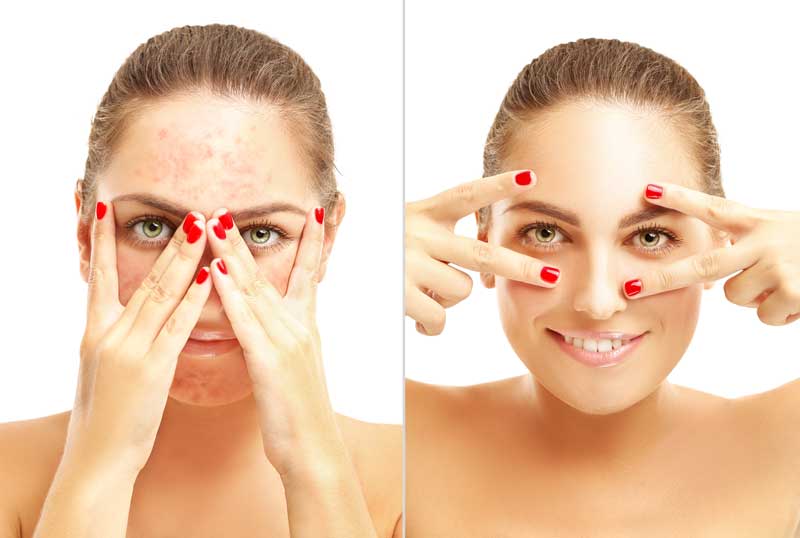
Rosacea Can Be Effectively Managed Through Proper Treatment Many People Assume That the Unsightly Redness of Their Face Is Just Simple Sunburn Or Acne When the Reality Is That They’re Suffering From Rosacea.
(PRWEB) April 21, 2015
People try many different things in order to look better. They may go to the gym more often, make sure that they wear sunscreen when going outdoors, and watch what they eat. One area of the body that is of particular concern to many people is their face. A face that glows with health is considered an attractive face. There are several afflictions that can impact our facial appearance, with the one that is most commonly considered is acne. However, there is another common skin condition that impacts 16 million people in the United States alone. (1) This condition is called rosacea, and one important thing to remember is that it is incurable. However, there are treatment options for those that suffer from it.
What exactly is rosacea? It’s an acne-like skin condition that normally affects the central area of the face. This area is comprised of the cheeks, nose, and forehead, but rosacea can affect other areas as well, such as the neck, chest, ears, and so on. Rosacea has several symptoms, with the most well known being that of redness of the face. It can also encompass tiny pimples and fine lines on the face that are red, as well as a bulbous red nose called rhinophyma. Rosacea can also impact the eyes, with examples of conjunctivitis and swollen, red eyelids. A common misperception is that rosacea is just simply the occurrence of sunburn, rosy cheeks, or acne. That’s why if such symptoms appear, it’s vital to consult a licensed dermatologist, such as Dr. F. Victor Rueckl of Lakes Dermatology in Las Vegas.
Rosacea usually is found in people who are between 30 and 50 years of age. In addition, women are three times more likely than men to get rosacea. (2) Scientists are still studying to find out what exactly causes rosacea. Some likely culprits include genetics, the immune system, how the body processes a specific protein (cathelicidin), and a bug (H pylori) that causes infections in the intestines. Even though no specific cause has been found yet, it is known that rosacea can flare up from time to time. There are also known triggers that can cause an outbreak: alcohol, stress, heat, and hot or spicy food. A vital consideration is that if rosacea is left untreated, it will become worse over time. That’s why it’s essential to visit an experienced medical professional, such as Dr. F. Victor Rueckl of Lakes Dermatology, in order to seek treatment as soon as possible.
While there is no cure for rosacea, it can be effectively treated and managed. There are a number of treatment options available due to the differing nature of each patient’s particular symptoms. One treatment option is a topical medicine that is applied directly to the rosacea. Another is an emollient designed to help repair the skin. Antibiotics are also used, both in pill and application form, as well in the treatment of this irritating skin condition. Intense pulsed light treatments, such as Lumecca, are quite useful in combating the disfiguring appearance of rosacea. Dermatologists can also remove the thickening skin that may appear on the nose or other parts of the face through the use of lasers, dermabrasion, and electrocautery. As each particular case is unique, it’s extremely important to consult a registered dermatologist, such as Dr. F. Victor Rueckl of Lakes Dermatology in Las Vegas, in order to determine the proper course of treatment for an individual patient.
While suffering from rosacea is no laughing matter, the good news is that there are treatment options out there to help minimize its effects. Dr. F. Victor Rueckl of Lakes Dermatology notes, “Many people assume that the unsightly redness of their face is just simple sunburn or acne when the reality is that they’re suffering from rosacea. While this condition will never go away, it can be treated in an effective manner. One procedure that I find highly effective is the use of intense pulsed light. I particularly like to use Lumecca with its 515 head as it targets the blood and vascular lesions much more effectively than any topical application ever could. As each patient’s case is unique, I would urge a consultation with a licensed dermatologist before any steps are taken to treat the problem.” (3)
While one can never rid themselves of rosacea, there are ways to treat and mitigate it. The most important consideration is for one to consult with an experienced dermatologist in order to get a proper diagnosis and to come up with a suitable treatment plan. Once the patient learns what can trigger an outbreak, they can take steps to avoid such triggers in the future. Flare ups may still occur, but the effects of rosacea can be treated through a variety of methods. One need no longer suffer in silence with rosacea as steps can be actively taken to combat it.
References:
1) http://www.medicinenet.com/rosacea/article.htm
2) https://www.aad.org/dermatology-a-to-z/diseases-and-treatments/q—t/rosacea/who-gets-causes
3) Quote from Dr. F. Victor Rueckl, dermatologist at Lakes Dermatology


